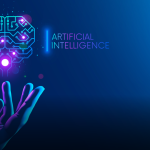
AI and Human Intelligence Collaboration in Ad Fraud Detection
- Post
- August 9, 2023
- Ad Fraud Prevention, Ad Serving Tech, Programmatic Advertising
- 0 Comments
In today’s rapidly evolving digital landscape, the battle against ad fraud has become a high-stakes game. As the sophistication of fraudulent activities escalates, the need for equally advanced detection methods becomes paramount. This is where the powerful synergy between Artificial Intelligence (AI) and human intelligence comes into play. In this comprehensive exploration, we delve into the seamless collaboration between AI and human intellect in the realm of ad fraud prevention. We’ll unveil the strategies, challenges, and remarkable outcomes that arise when cutting-edge technology and human expertise join forces.
Understanding Ad Fraud Prevention: A Complex Landscape
Ad fraud has become a formidable challenge for the digital advertising industry, siphoning billions of dollars annually. Traditional fraud detection mechanisms often fall short due to the evolving tactics employed by fraudsters. To counter this, a multi-pronged approach that integrates AI and human intelligence has gained traction.
The Role of AI in Ad Fraud Prevention
AI has emerged as a game-changer in the fight against ad fraud. Through sophisticated algorithms, AI can swiftly analyze massive datasets and detect irregular patterns that might elude human scrutiny. Machine learning models can identify anomalies, click fraud, impression fraud, and even emerging forms of fraud, providing a real-time shield against fraudulent activities.
Leveraging Human Intelligence: Beyond Algorithms
While AI is undeniably powerful, human intelligence brings a unique dimension to the battle. Humans possess intuition, contextual understanding, and domain expertise that algorithms lack. Experts in the field can interpret nuanced behaviors, adapt to emerging tactics, and make judgment calls that machines struggle with.
The Collaborative Approach: Amplifying Strengths
The true potential lies in collaboration. Combining the analytical prowess of AI with human expertise creates a synergy that outsmarts even the most sophisticated fraudsters. AI algorithms process colossal amounts of data, flagging potential issues, while human analysts investigate, validate, and fine-tune the system’s parameters.
Challenges on the Horizon
However, this collaboration isn’t devoid of challenges. Integrating AI with human efforts requires a seamless flow of communication, a common understanding of goals, and continuous learning. Ensuring that AI models don’t perpetuate biases and that human interventions enhance, rather than hinder, the process is an ongoing concern.
The Unseen Revolution: How AI and Humans Work in Tandem
Data-Driven Detection: AI’s Core Strength
AI-driven fraud detection is anchored in data analysis. AI algorithms analyze vast datasets to uncover patterns and anomalies that might go unnoticed by human analysts. These algorithms can efficiently track user behaviors, click-through rates, conversion rates, and other critical metrics to identify deviations indicative of fraudulent activity.
Real-Time Response: The AI Advantage
One of AI’s prime benefits is its ability to respond in real-time. As fraudulent tactics evolve, AI models adapt quickly, ensuring that new and emerging threats are promptly identified. This nimbleness is crucial in an environment where fraudulent actors constantly innovate their strategies.
Human Insight: A Critical Edge
While AI excels at data crunching, human analysts provide the crucial contextual understanding. They can recognize legitimate reasons for unusual behaviors, spot emerging trends, and understand the broader industry landscape. This combination of AI’s analytical power and human discernment creates a robust defense against ad fraud.
Continuous Learning Loop: Refining the System
The collaboration between AI and human analysts doesn’t end at detection. It extends to continuous improvement. Human feedback helps AI models refine their algorithms, reducing false positives and negatives. This iterative process enhances the system’s accuracy and efficiency over time.
Commonly Asked Questions
Q1: Can AI completely replace human analysts in ad fraud detection?
A1: While AI enhances efficiency, human intuition and contextual understanding remain invaluable for nuanced decision-making.
Q2: How do AI models adapt to new and evolving fraud tactics?
A2: AI models employ machine learning to learn from new data, allowing them to swiftly adapt to emerging fraud patterns.
Q3: Are there instances where AI might flag legitimate activities as fraud?
A3: Yes, AI algorithms might generate false positives. This is where human analysts step in to provide the necessary context.
Q4: What role does real-time detection play in ad fraud prevention?
A4: Real-time detection by AI ensures that fraudulent activities are identified and mitigated promptly, minimizing potential losses.
Q5: How can businesses ensure bias-free AI fraud detection?
A5: Businesses need to regularly audit and fine-tune their AI models, ensuring that biases do not seep into the detection process.
Final Words
In the dynamic realm of ad fraud detection, the symbiotic relationship between AI and human intelligence shines as a beacon of hope. By melding the precision of AI algorithms with the insight of human analysts, the digital advertising industry stands a stronger chance against the ever-evolving threat of ad fraud. This collaboration is not merely a trend; it’s a paradigm shift that cements a future where technology and human expertise are indispensable allies. The fusion of AI and human intelligence has unlocked a new era of ad fraud prevention, one where innovation and vigilance go hand in hand.




